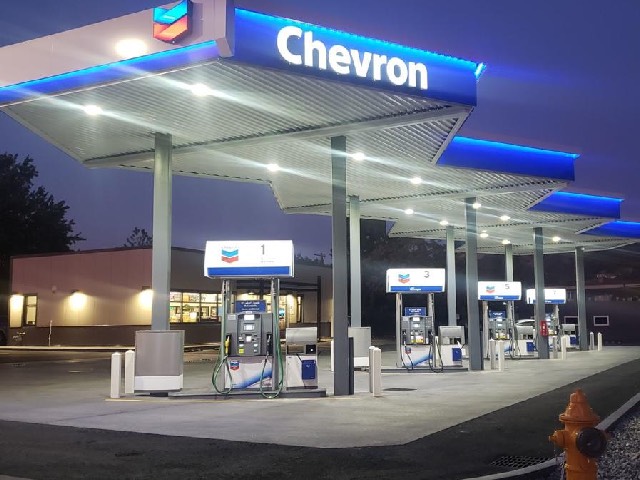- Targets more than doubling return on capital employed by 2025
- Expects free cash flow to grow more than 10% per year by 2025
- Increases expected Noble synergies to $600 million, twice the initial estimate
- Targets 35% carbon intensity reduction by 2028
At its annual investor meeting today, Chevron Corporation announced plans to increase return on capital employed and lower carbon intensity to enable superior distributions to shareholders.
“Chevron’s message to investors is summarized in four words – higher returns, lower carbon,” said Michael Wirth, Chevron’s chairman and CEO. “We’re building on our track record of capital and cost discipline to deliver higher returns. And we’re taking action to advance a lower carbon future.”
Higher Returns
Chevron will continue to drive a disciplined capital and cost program to deliver higher returns for shareholders. In line with this objective, the company announced it has:
- Reaffirmed its 2021-2025 guidance for organic capital and exploratory expenditures of $14 billion to $16 billion.
- Doubled its initial estimate of Noble synergies to $600 million, which contributes to an expected reduction in 2021 operating expenses of 10% from 2019.
The combination of a more capital efficient investment program and lower costs is expected to result in a doubling of the company’s return on capital employed and 10% CAGR of free cash flow by 2025 at $50 Brent.
“The path to increase return on capital employed is straightforward – invest in only the highest-return projects and operate cost efficiently,” said Pierre Breber, Chevron’s CFO. “Capital discipline and cost efficiency always matter. We have the portfolio and investments that position us to increase returns and grow free cash flow.”
Over the next five years, as capital is expected to decrease for its major expansion in Kazakhstan, the company expects to increase its investment in a number of Chevron’s attractive assets, including its world class position in the Permian.
“Our Permian Basin asset is advantaged relative to others. The long-term outlook is positive and capital efficiency is improving,” said Jay Johnson, executive vice president, Upstream. “We expect to grow production while generating strong free cash each year along the way.”
In Kazakhstan, the FGP-WPMP project is 81% complete and remobilization of project staff continues to progress. “We remain focused on sustaining our pandemic mitigation measures and increasing productivity at Tengiz,” Johnson said. “Executing our 2021 work program, amidst the pandemic, will be an important signpost for the project’s budget and schedule.”
Lower carbon
The company exceeded its 2023 upstream carbon intensity reduction targets three years ahead of schedule and today announced lower 2028 targets and zero routine flaring by 2030. The new targets align with the second stock-take period under the Paris Agreement and include all of Chevron’s production on an equity-basis:
- 24 kg CO2e / boe for oil and gas GHG intensity; a combined 35% reduction from 2016
- 3 kg CO2e / boe for overall flaring intensity; 65% lower than 2016
- 2 kg CO2e / boe for methane intensity; 50% lower than 2016
“Our energy transition strategy is focused on actions that are good for both society and shareholders,” said Bruce Niemeyer, vice president of Strategy & Sustainability, “Achieving our 2028 goals is expected to keep Chevron a top quartile oil and gas producer in terms of carbon intensity.”
In addition, the company updated plans to increase renewable energy and carbon offsets and to invest in low-carbon technologies such as hydrogen and carbon capture, utilization and storage. Over the past several weeks, Chevron launched its second Future Energy Fund with an initial commitment of $300 million and announced a new bioenergy partnership in Californiawith Schlumberger and Microsoft, designed to qualify as carbon negative.
“We released our third TCFD-aligned climate report today, which details how Chevron plans to deliver long-term value in a lower carbon future,” Wirth said. “We expect to invest more than $3 billion in the coming years to advance our energy transition strategy.”
For more information about Chevron’s approach to the energy transition, please see Chevron’s Climate Change Resilience report found here.









































